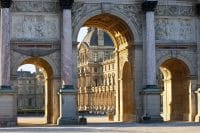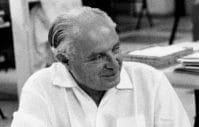
Rococo Style: How it Distincts in Architecture, Furnishings and Painting
Rococo Style: Birth and Development The Rococo, as a reflection of the trends, tastes and way of life of France…
No products in the cart.
€14.000,00
Sixteenth/seventeenth century
With frame cm. 165 x 139
Jan Kraeck, in Italy Giovanni Caracca (Haarlem circa 1540 – Turin 1607), Workshop of
Equestrian portrait of Carlo Emanuele I, Duke of Savoy (Rivoli 1562 – Savigliano 1630) known as 'the Great'
Oil on canvas (148 × 122 cm – With frame 165 x 139 cm)
The work is also accompanied by an expert report drawn up by doctor Arabella Cifani, which traces it back to a pupil of the master, Giulio Maino (1570-after 1643)
The subject of this fascinating equestrian portrait is Carlo Emanuele I, Duke of Savoy (Rivoli 1562 – Savigliano 1630), immortalized as an adult, proud on the back of his white horse, in his sumptuous ceremonial armor outlined by thin golden ornaments. He wears short hair, a pointed beard and moustache, with a lace ruff around his neck.
Nicknamed 'Firehead' by his subjects, due to his obvious military aptitudes and impetuous character, he was one of the most skilled and cultured princes in the history of the House of Savoy; his birth was announced to the family by Nostradamus, in 1561, who added that he would become "the greatest leader of his time".
He married the daughter of Philip II of Spain, Caterina Michela, confirming the traditional link of his house with the Habsburgs of Spain.
Ambitious and self-confident, thanks to the excellent state of the Duchy inherited from his father, he tried to expand his power territorially: he left the Duchy of Savoy an administrative, diplomatic and military organization of an efficiency and solidity never known in the past , created with the contribution of the Piedmontese officials with whom he surrounded himself. Turin was enriched with churches, palaces and monuments and the Savoy court became the greatest Italian cultural center thanks to intellectuals from all over the peninsula.
Our beautiful portrait stands out for the pose of the valiant noble knight who sits firmly on the back of his steed and holds the staff of command.
The armour, in its sumptuousness and richness, recalls those popular in the Spanish court and among the Habsburgs, as demonstrated by the portraits of artists active for the Spanish Kings between the sixteenth and seventeenth centuries: remember for example the famous Charles V on horseback by Titian ( 1548, Museo del Prado), the Equestrian Portrait of Charles V of Habsburg (ca. 1620, Uffizi, Florence) and the Portrait of Charles I of England (1640, Museo del Prado), both the latter by Van Dyck, with a type of portrait that glorified and highlighted the strength and magnificence of the immortalized ruler.
The work is certainly created by an author/collaborator of the workshop of the Flemish painter Jan Kraeck (Haarlem 1540 – Turin 1607), known by the Italianized name of Giovanni Caracca, active mainly as a painter at the Savoy court, working both in the service of Emanuele Filiberto I who for his son Carlo Emanuele I of Savoy between 1568 and 1607, and engaged in the most important construction sites promoted by the dynasty.
During his stay at the Savoy court Caracca created numerous portraits, and in particular it is right to mention the series dedicated to the depiction of the entire genealogy of the counts and then dukes of Savoy, commissioned at the beginning of the seventeenth century by Carlo Emanuele I for his Grand Gallery (which united the Castle and Palazzo Ducale), which were however destroyed by the fire of 1659.
The equestrian portrait of Carlo Emanuele I, in particular, was in fact replicated by Caracca and his workshop on several occasions, one of which for the Grand Gallery, for which he also painted the image of his father Emanuele Filiberto I; this series of canvases, with portraits rigorously on horseback, as Caracca himself had drawn, should have initially appeared above the wardrobe closets, with the effigies standing out majestically from the top of the large corridor.
The portraiture production of our painter was strongly influenced by the meeting with the artists active at the Spanish court, in 1585, on the occasion of the wedding between Carlo Emanuele I and the Enfanta of Spain Caterina Michela, daughter of Philip II. The meeting with the portraitists at the Spanish court oriented his production, initially based only on the model of French portraiture at the end of the XNUMXth century, towards the canons of the 'International Court Portrait' with an eye to the painting of Alonso Sanchez Coello and Antonio Moro.
ADDITIONAL INFORMATION:
The painting is sold complete with a pleasant antique golden frame and is accompanied by a certificate of authenticity and descriptive iconographic card.
We take care of and organize the transport of the purchased works, both for Italy and abroad, through professional and insured carriers.
If you have the desire to see this or other works in person, we will be happy to welcome you to our new gallery in Riva del Garda, in Viale Giuseppe Canella 18. We are waiting for you!
Contact us for any information or to organize a visit, we will be happy to answer you.
Follow us also on:
https://www.instagram.com/galleriacastelbarco/?hl=it
https://www.facebook.com/galleriacastelbarco/

Rococo Style: Birth and Development The Rococo, as a reflection of the trends, tastes and way of life of France…

The Empire style, with its magnificent fusion of majesty and grace, remains an icon of classic furnishings, exerting a timeless charm…

Giò Ponti is one of the artists who most dominated the Italian post-war period, acting as a spokesperson for important innovations in the world…
€14.000,00
have viewed this article in the last 30 minutes.